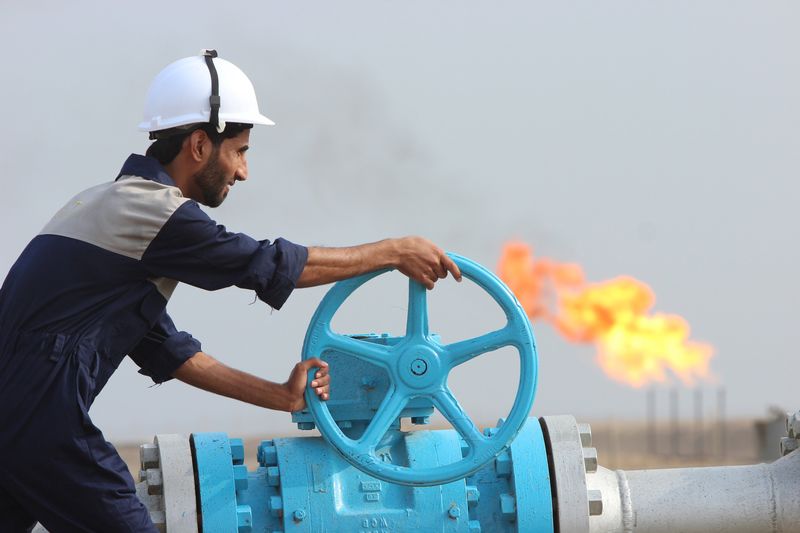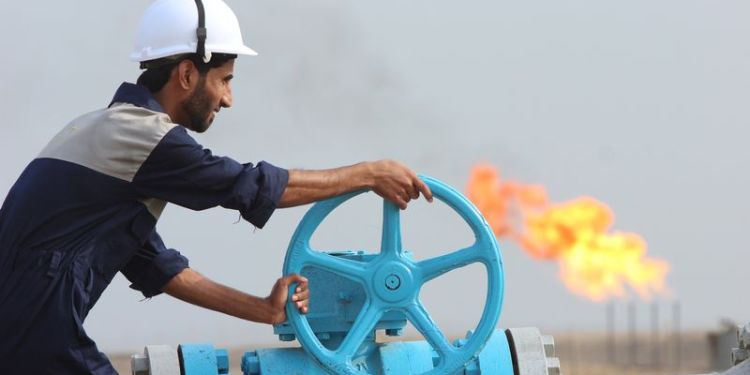
© Reuters.
LCO
+0.12%
Add to/Remove from Watchlist
Add to Watchlist
Add Position
Position added successfully to:
Please name your holdings portfolio
Type:
BUY
SELL
Date:
Amount:
Price
Point Value:
Leverage:
1:1
1:10
1:25
1:50
1:100
1:200
1:400
1:500
1:1000
Commission:
Create New Watchlist
Create
Create a new holdings portfolio
Add
Create
+ Add another position
Close
CL
+0.07%
Add to/Remove from Watchlist
Add to Watchlist
Add Position
Position added successfully to:
Please name your holdings portfolio
Type:
BUY
SELL
Date:
Amount:
Price
Point Value:
Leverage:
1:1
1:10
1:25
1:50
1:100
1:200
1:400
1:500
1:1000
Commission:
Create New Watchlist
Create
Create a new holdings portfolio
Add
Create
+ Add another position
Close
By Barani Krishnan
Investing.com — Half-truths or subtle threats, OPEC+ has combined both cunningly to keep crude prices up for the better half of the last two years. And when the cartel doesn’t do that, oil bulls seem to get upset.
Crude markets snapped a three-day rally to tumble as much as 2% on Thursday on talk that oil longs were dismayed that OPEC+ might not announce a wider production cut after this week’s 15-month low in prices.
“There is too much pessimism in the oil market right now,” said Ed Moya, analyst at online trading platform OANDA. “The bears have been in control as many energy traders remain unconvinced that the demand will be improving enough to bring down stockpiles.”
New York-traded West Texas Intermediate, or WTI, crude settled down 94 cents, or 1.3%, at $69.96 per barrel, below the key $70 support level. In post-settlement trade, it continued to extend its drop to as low as $69.25, or more than 2% down.
London-traded Brent crude settled down 78 cents, or 1%, at $75.91, but later shot down to $75.21, or almost 2% lower.
OPEC+, which groups the Saudi-led 13-member Organization of the Petroleum Exporting Countries with 10 independent oil producers steered by Russia, is unlikely to go beyond the production cut of 2 million barrels per day it announced in November, three delegates from the producer group were reported telling Reuters. OPEC+ will hold a policy meeting on April 3.
The oil cartel’s stance comes despite a U.S. banking crisis sending WTI to below $65 and Brent to almost under $70 at the start of this week.
“Oil bulls have come to lean on OPEC+’s half-truths and veiled threats of further cuts each time crude prices appear to be on the verge of a major collapse,” said John Kilduff, partner at New York energy hedge fund Again Capital. “So, when OPEC+ decides to stay pat, there is always a modicum of disappointment at least from the long side of oil. That appears to have blown out towards the close of today’s market as bears took full advantage of the glum feeling.”
Given that a third of global supply is already at risk from the sanctions imposed on Russia over Ukraine, OPEC+ knows that the fear of undersupply is greater to the oil market than concerns of a glut.
Thus, the careful dropping of words like “the market needs to be balanced” is often enough to create a premium of between $5 to $10 per barrel anytime from a week before an OPEC meeting to one after it. A $10 rally would essentially cover all that crude prices lost over the past week.
While the alliance is supposed to be practicing a daily output cut of 2M barrels, overproduction is reported commonly, with the refrain being that the market is still balanced.
“Data will show that OPEC+ has done bunk in many months with the so-called production cut of 2.0M barrels,” Kilduff said. “But the market keeps buying its BS.”
After crude prices hit 15-month lows, Iraq’s Prime Minister Mohammed Shia al-Sudani and OPEC Secretary General Haitham Al Ghais stressed the need to coordinate among oil-exporting nations to ensure prices do not fluctuate and impact both exporter and consumer countries. Interestingly, OPEC+ seldom sees the need to coordinate or “balance” the market when prices are rising.
Source: Investing.com



























